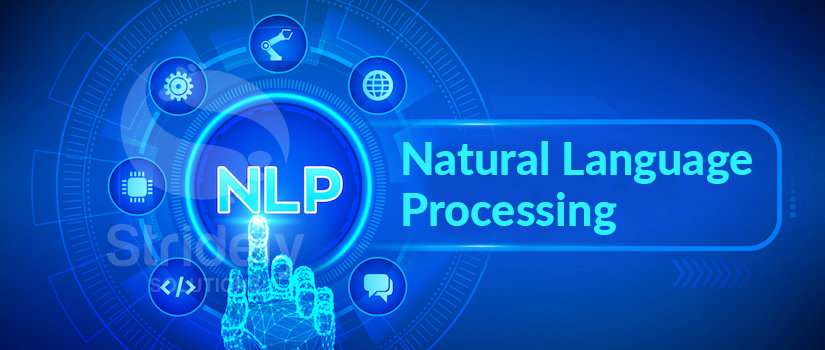Gone are the days when data was considered to be a scrap sitting in your hard drive or maybe the file room, waiting to be disposed of. There has been a dramatic shift from the information age to something that we call as the experience age.
Today, business is more about identifying what a segment of customers expects by assessing past experiences. Decisions are more than factual predictions but based on real-time information. And all of this is hidden behind those hefty, unwanted, and unstructured data. A recent survey highlights the copious amount of data that would flood the industry, 463 exabytes each day to be precise.
But how do we put this data to use??
This is where we get to introduce the concept of Natural Language Processing. And what is that?
Ever used Apple Siri or Microsoft Cortona? Maybe the autotype feature? How about the voice to text option?
That’s what NLP is all about.
Defining NLP: Natural Language Processing
Better known as the subset of Artificial Intelligence, natural language processing is a fascinating algorithm that bridges the gap between humans and computers. It helps the computer to understand human language and then act in the most suitable way.
The core working of NLP begins with identifying the key elements of instruction, extract relevant information, and then process the same enabling machines to act in the desired way. Traditionally, computers or machines do not possess the intelligence to decrypt human language. However, with the intrusion of NLP, they can now understand the expressions and even emulate human behavior.
In addition to the above, NLP accelerates the speed of operation cutting down the response time. Not sure how?
Let’s understand this through an example:
Consider a manufacturing company that has multiple machines working to produce and manufacture goods. They have a data scientist that keeps tracks of all the machine readings, identifying gaps, and then providing reports on the operability of the same. Now, this is ideally a time-consuming process and it might so happen that by the time, the management views the report, an accident has already occurred.
On the other hand, imagine having a Robot with sensors fitted within. This will help the management to remotely access the machinery and keep track of its operation. Any change in the machine can be detected through the runtime and performance of the same. If at all, the team detects an error, they can schedule a repair preventing further damage.
With NLP, manufacturing industries can cut out the middleman while effectively creating a digitally sound infrastructure.
Yet this is just one instance of NLP in the manufacturing industry and the technology has a lot more to offer than just predictive reasoning.
Here are a few examples that will help you understand the notion better.
Implementing NLP in Manufacturing Industry
Process Automation:
NLP works in tandem with artificial intelligence to act and behave like humans. This enables leaders to embed automation within their workforce. Whether it is about processing paperwork or performing a routine analysis, NLP tools are ideally rich in all the features needed to get the process going without any human intervention. The tools or the algorithms are so designed that they can, without fail, scrutinize the current scenario and act accordingly.
For instance, if the algorithm is programmed to monitor the temperature within the factory, it would automatically send an alert to the desired person as soon as the reading exceeds the given value.
Inventory Management:
Natural Language Processing is all about processing huge chunks of data, analyzing data, and then laying up insights for better decision making. However, this is not the end. The tools are designed for total automation. Meaning that they can not only detect and notify information but also take the step forward to act just like humans.
Consider, for example, you have installed sensors with the warehouse which is further connected with the NLP tools. The data is collected from the sensors about the production, the goods in hand, and the amount sold. Based on this, the tool can analyze if the inventory is surplus or whether they would need more goods to meet the demands in the upcoming days.
If it appears that there is a shortage of goods or the company is more likely to witness a greater demand, the tool would notify the manufacturing department about the same, fostering the process of production.
Emotional Mapping:
Another fascinating impact of embedding Natural Language Processing in manufacturing is learning about customer expectations. Selling products to customers is a one-time thing. In order to build a longer relationship, it is important to know what your customer expects and what their experiences after buying the products.
NLP has this ability to understand and track the emotions of the customers, helping know one better. The fun fact being when you are aware of the experiences, you can better assist your customers, streamline the selling process, and pitch products better. All of this aids an improved selling cycle accounting for growth and higher ROI.
Operation Optimization:
Lastly, NLP tools are equipped in algorithms that can trace the performance of equipment, notifying if one is not 100% efficient. Such information enables real-time monitoring of the machinery and taking significant measures to improve the operability of the system. Not to mention the fact that when all the equipment are performing at their best, the end to end productivity is increased. Natural Language Processing also keeps an eye on the different operations ensuring better and smarter results.
Conclusion
True that incorporation of the NLP within the manufacturing industry seems appealing and beneficial. However, using the same isn’t easy and requires a great deal of training. Further, one needs to have the appropriate interface to integrate the system within the infrastructure. Once done, the team then needs to be cautious about which data to use and how. Implementing NLP in manufacturing can transform the sector and for the good, but only when done in the right way.


